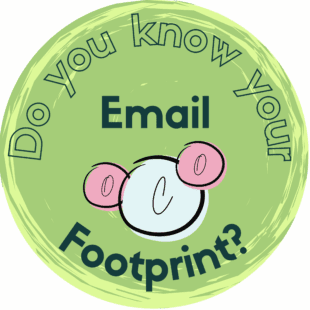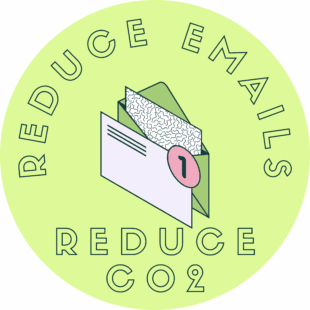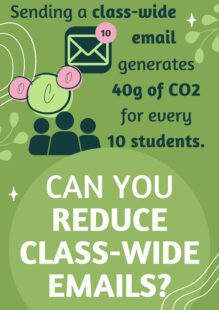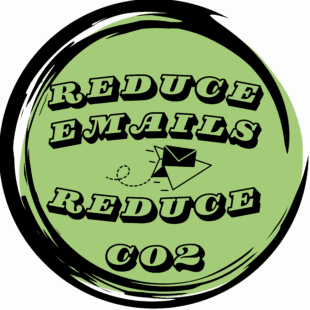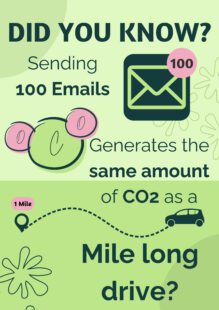Did you know that sending an email generates carbon dioxide emissions?
It’s true. Sending a normal email generates 4g of CO2e, and sending an email with an attachment (like a photo or a file) generates 50g of CO2e.
If you didn’t know that, you’re not alone. Digital sustainability is an infrequently discussed topic, but one just as impactful on the environment as any other sustainability topics. Digital activity, such as sending emails, downloading files, and using generative AI, generates carbon emissions that affect the environment in similar capacities as fuel and electricity use.
With Dr. Daniel Farrelly and Katy Boom from the University of Worcester, a team of students from Worcester Polytechnic Institute (WPI) in Worcester, Massachusetts, set out to observe the awareness of digital sustainability on the University of Worcester, UK campus.
Using the Email Conservation Task (ECT), a tool developed by Dr. Farrelly to measure participants’ pro-environmental behaviour, as a baseline, the team created a pilot survey to be distributed on campus. This survey asked questions such as “On average, how many emails do you receive per day?” and “How often do you use generative AI?”, as well as more fact-oriented questions, like “How much carbon dioxide do you think sending an email produces?”. These questions were all aimed towards one goal: gauging how much awareness the University of Worcester campus has of the impact of their digital behaviour, and starting to raise awareness of the issues. This survey was distributed online and received a total of 86 responses.
The Results
For the team, the survey results revealed some key information. A major focus of the survey was email volume. How many emails were students and staff on campus sending? How many were they receiving, and what kinds?
Based on the survey results, students and staff are receiving more legitimate emails daily than spam emails (such as emails from unknown senders, or promotional emails from businesses) in their university inboxes. As shown in Figure 1 below, students and staff reported a more widespread distribution of legitimate emails, with a large number reporting receiving 11-20 or 21-30 emails daily. In Figure 2, however, most students and staff report receiving 0-10 spam emails a day, indicating that they are less common in their university inbox.
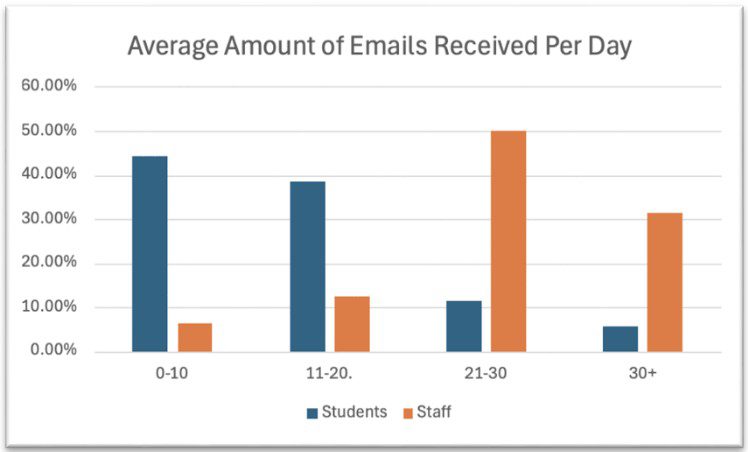
Figure 1
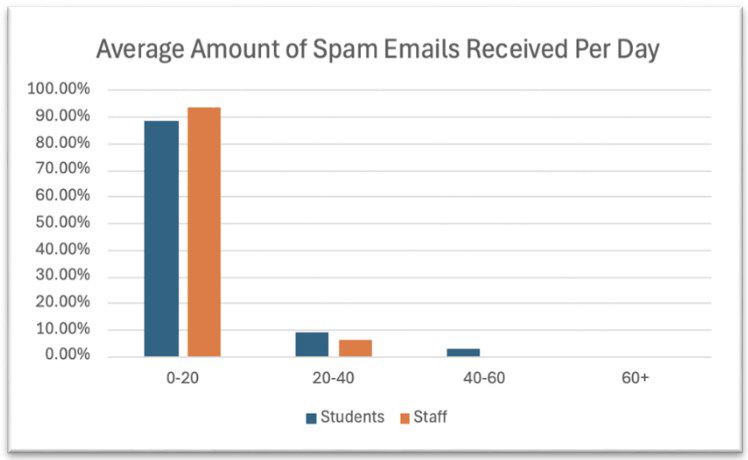
Figure 2
To the team, this painted a clear picture: a high volume of emails at a university level. As one staff member pointed out in the end-of-survey open-response question, “Email volume is mostly generated by my administration role within the University”, to which they continued by saying that they would “appreciate a culture change to help reduce this volume”. This opinion was widespread across survey responses, as several participants reported an intention to reduce the amount of emails they send at the end of the survey.
There were similar results when the survey asked about AI usage, with 70% of survey participants reporting using generative AI tools at least once a week, but only 48% of participants saying they were aware of the environmental impact that AI has. The data centres used to host AI servers utilise a great deal of power and water, which most on-campus users are unaware of.
What can be done to improve
This may all seem like an intimidating problem to fix. After all, emails and file sharing are deeply ingrained aspects of our daily digital lives. Not to worry, though. The WPI team also used the results of the pilot survey to develop educational materials and recommendations for the campus community.
This won’t be a change that happens quickly, but to get the ball rolling, here are a few things you can try:
– Unsubscribe from spam and promotional emails (where safe No one wants to pick up a virus from an unsafe link)
– Share files in online servers, such as OneDrive or Google Drive, where multiple people can access it in the same place instead of attaching the same file to multiple emails
– Removing images from your email signature. Those pictures count as sending an email with an attachment and make sending a regular email have a bigger environmental impact.
– Consider whether a conversation needs to be an email, or whether it can simply be an in-person conversation instead
Educational materials, developed directly from survey responses. Monitoring your digital activity reduces your carbon footprint and helps others do the same.
